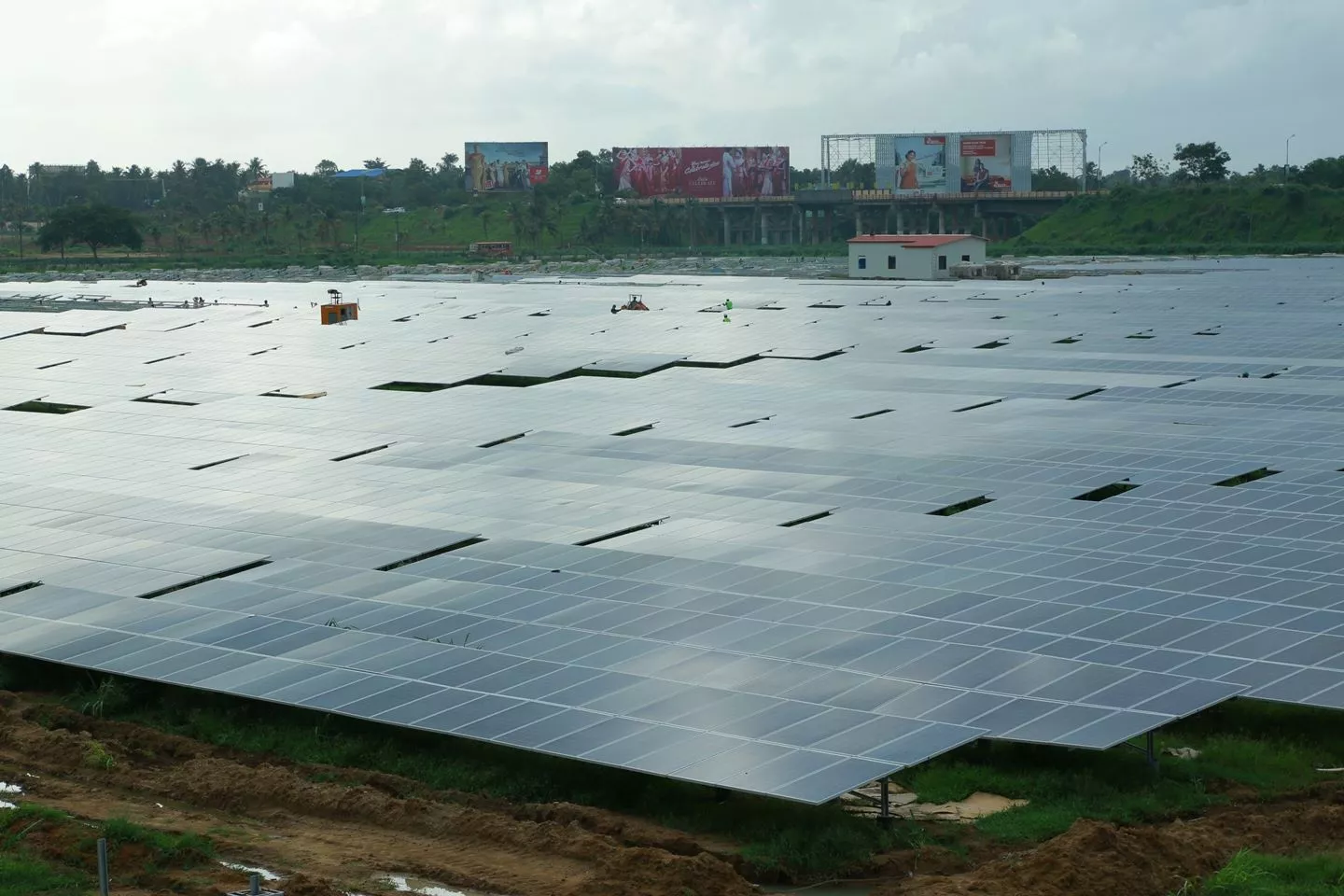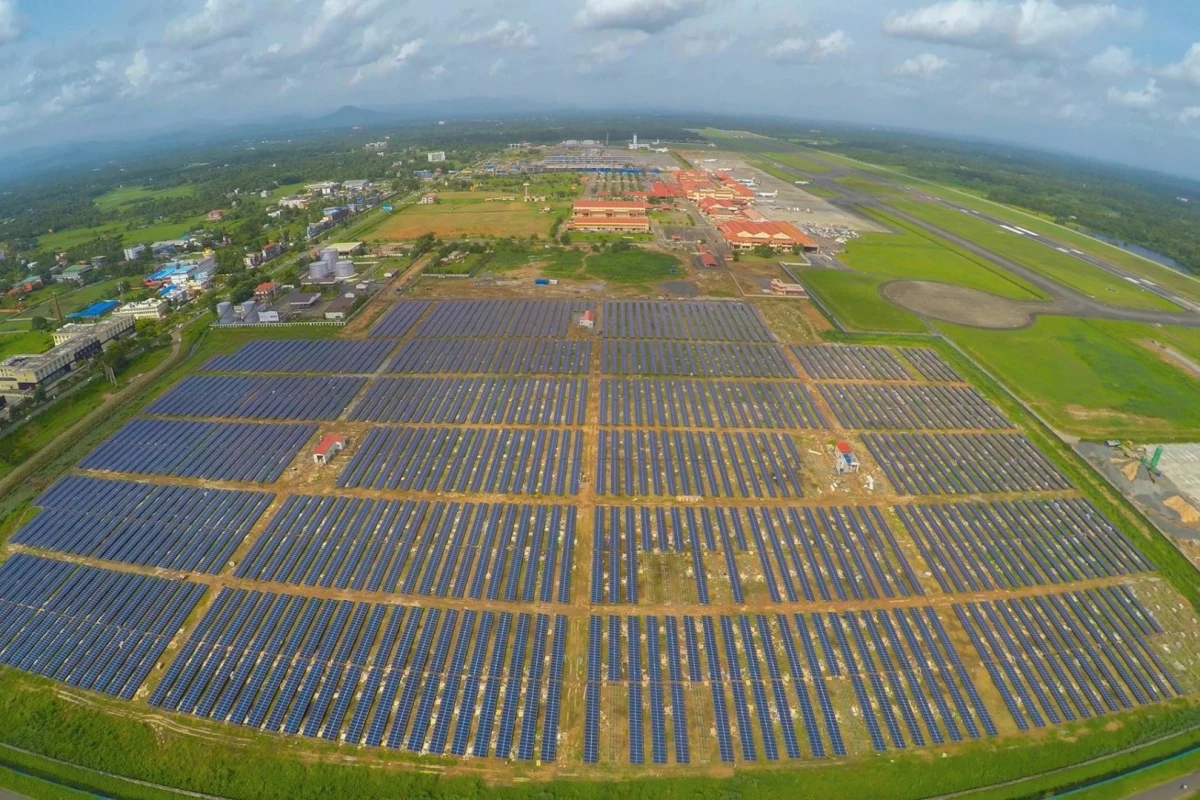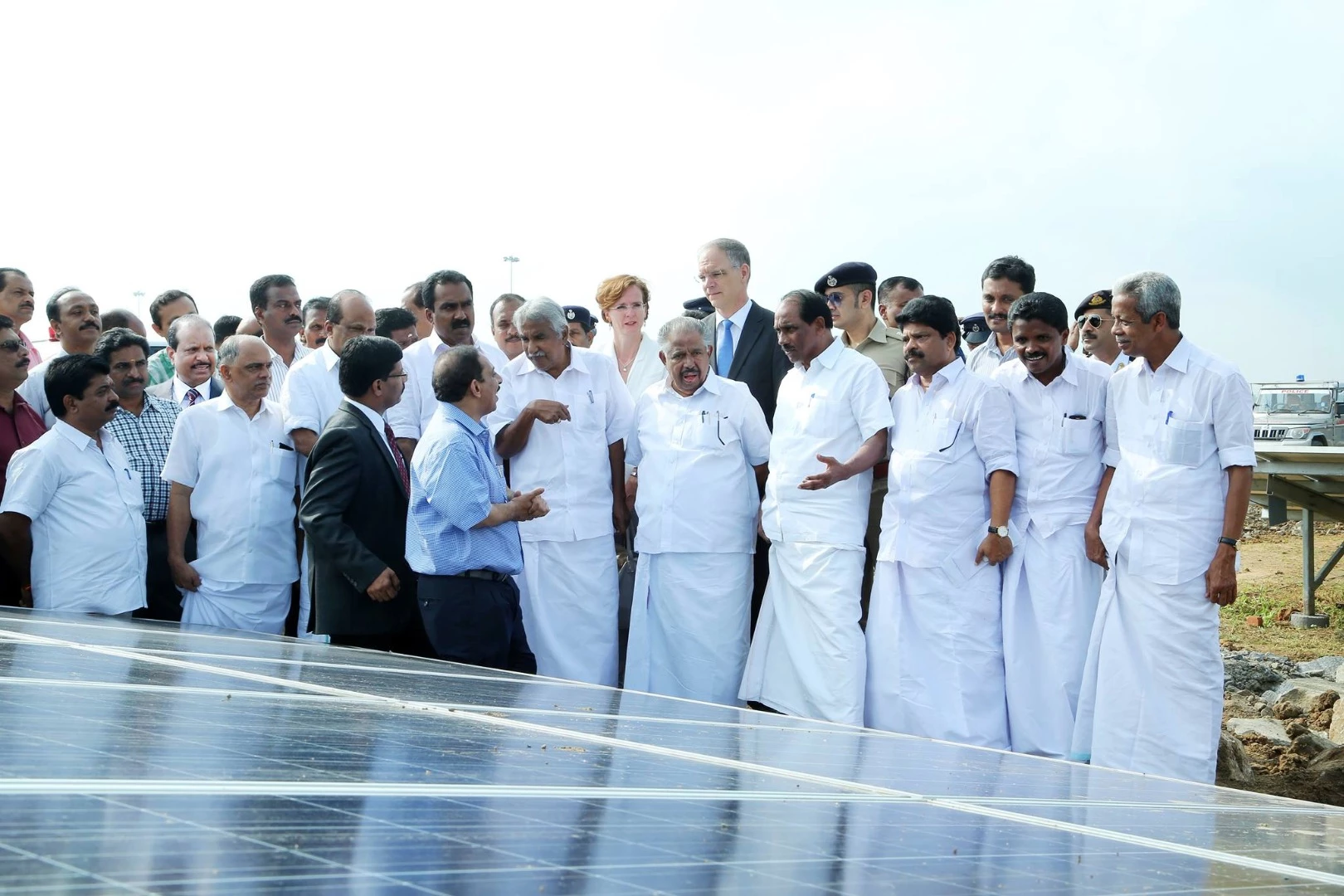It may not be the first airport to fit solar panels to its terminals, but India's Cochin International Airport is set to become the first in the world powered entirely by solar. Situated in Kochi, the airport handled 6.8 million passengers in the 2014-15 financial year and forecasts a 300,000-tonne (330,700-ton) reduction in carbon emissions over the next 25 years as a result of the switch to solar.
The Cochin International Airport, which is the first in India developed under a public-private partnership model, first dipped its toes into the solar power waters in 2013 when it built a 100 kilowatt peak (kWp) rooftop photovoltaic (PV) plant on its arrivals terminal. This was followed by a 1 MWp PV plant that was split between the rooftop and the ground at its aircraft maintenance hangar facility.
Now it scaling things up in a big way. Unveiled this week, the new 12 MWp solar plant stretches across 45 acres (18.2 ha) and is made up of more than 46,000 photovoltaic solar panels that are located alongside the cargo terminal. The airport claims that the power it generates each year would be enough for 10,000 homes. In combination with the pre-existing solar plants, the plant is expected to make the airport completely carbon neutral.

The company says the mitigation of carbon emissions over the next 25 years is equivalent to planting three million trees or not driving 750 million mi (1.2 billion km). Al Jazeera reports that the plant took six months to build at a cost of US$10 million, with the airport expecting to recover that outlay through energy savings within five years. The solar plant is also expected to generate more power than is required to run the airport, which will be connected to the grid to allow excess power to be sold to the state electricity board.
The initiative lines up nicely with the Indian government's National Solar Mission, which had originally set a target of country-wide installed solar capacity of 22 GW by 2022. This has since been upped to 100 GW by 2022, and is slated to include 57 GW in larger ground-mounted projects and 40 GW in rooftop solar.
Source: Cochin International Airport







